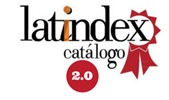Analysis of the types of vegetables that can be grown in culinary organic gardens in La Mana City
DOI:
https://doi.org/10.56124/allpa.v8i15.0107Keywords:
Garden, feeding, green vegetables, farmingAbstract
The application of a culinary ecological garden arises from the main need to offer a diversity of easily accessible products for human consumption and, at the same time promote theoretical and practical learning that enhances the skills of a more sustainable food system. The diverse production of crops within a culinary ecological garden provides balance to the environment, so it is necessary to begin an analysis of the type of vegetables that can be adapted to the garden to be implemented on Campus 2 of the Gastronomy Technology Higher Career. Through a bibliographical methodology, identified information about the characteristics of vegetables adaptable to this type of climate, with the application of a survey aimed at students and teachers of the Gastronomy Career allowed to determine that the main benefit of implementing a garden is to improve the diet of the focus group and promote the consumption of local products; finally concluding that the vegetables suitable for the culinary ecological garden will be tomatoes, peppers, lettuce, and chives, which will be used in prepare diversity culinary practices during professional training.
Keywords: Garden, feeding, green vegetables, farming.
Downloads
References
Barajas, F. (2021). Universidad ECCI. Obtenido de Análisis de los beneficios económicos de las huertas de la vereda Hatillo y Socha del municipio de Gachantivá (Boyacá): chrome-extension://efaidnbmnnnibpcajpcglclefindmkaj/https://repositorio.ecci.edu.co/bitstream/handle/001/2723/Trabajo%20de%20grado.pdf?sequence=1&isAllowed=y
Böesser, C., & Fernández, H. (22 de Abril de 2019). EFE Salud. Obtenido de Hortalizas y verduras: ¿son lo mismo?: https://efesalud.com/verduras-hortalizas-beneficios/
Cartegena, M., Centeno, M., & Salcán, R. (15 de 05 de 2024). Cantón La Maná, Cotopaxi, Ecuador.
FAO. (2022). El estado mundial de la agricultura y la alimentación 2022. Obtenido de https://www.fao.org/documents/card/en?details=CB9479ES
García, J., Gastón, J., & Araújo, M. (2019). Factores sociales explicativos de la riqueza vegetal en huertos familiares: análisis de una estrategia de vida. Sociedad Ambiente. Obtenido de https://revistas.ecosur.mx/sociedadyambiente/index.php/sya/article/view/1931/1777
García, J., Gutiérrez, Jesús, Balderas, M., & Araújo, M. (2016). Estrategia de vida en el medio rural del altiplano central mexicano: el huerto familiar. Scielo. Agricultura, sociedad y desarrollo. Obtenido de https://www.scielo.org.mx/scielo.php?pid=S1870-54722016000400621&script=sci_arttext
Junta de Castilla y León. (2020). Obtenido de Historia de la alimentación humana: https://www.saludcastillayleon.es/ventanafamilias/es/infancia/alimentacion/bases-alimentacion-saludable/historia-alimentacion-humana
Latham, M. (2002). FAO. Obtenido de https://www.fao.org/4/w0073s/w0073s00.htm#Contents: https://www.fao.org/4/w0073s/w0073s00.htm#Contents
MTOP. (Noviembre de 2021). Coordinación General de Planificación y Gestión Estratégica. Obtenido de Intervención por emergencia vial de la carretera Latacunga - La Maná E-30; entre las abscisas 56+000 hasta la abscisa 120+000, provincia de Cotopaxi. : https://www.obraspublicas.gob.ec/wp-content/uploads/downloads/2022/08/Lotaip_7_Emergencia-Latacunga-La-Mana.pdf
PDOT. (2021). Obtenido de Plan de Desarrollo y Ordenamiento Territorial del Cantón La Maná: https://drive.google.com/file/d/1bx58MwMGBVrQPAzKCOt3TIiwZJSYa8eH/view
Urias, D., & Ochoa, J. (2020). Huertos urbanos como estrategia de resiliencia urbana en países en desarrollo. Viviendas y Comunidades Sustentables.
Published
How to Cite
Issue
Section
License
Copyright (c) 2025 Revista de Ciencias Agropecuarias ALLPA. ISSN: 2600-5883.

This work is licensed under a Creative Commons Attribution-NonCommercial-ShareAlike 4.0 International License.


.jpg)










